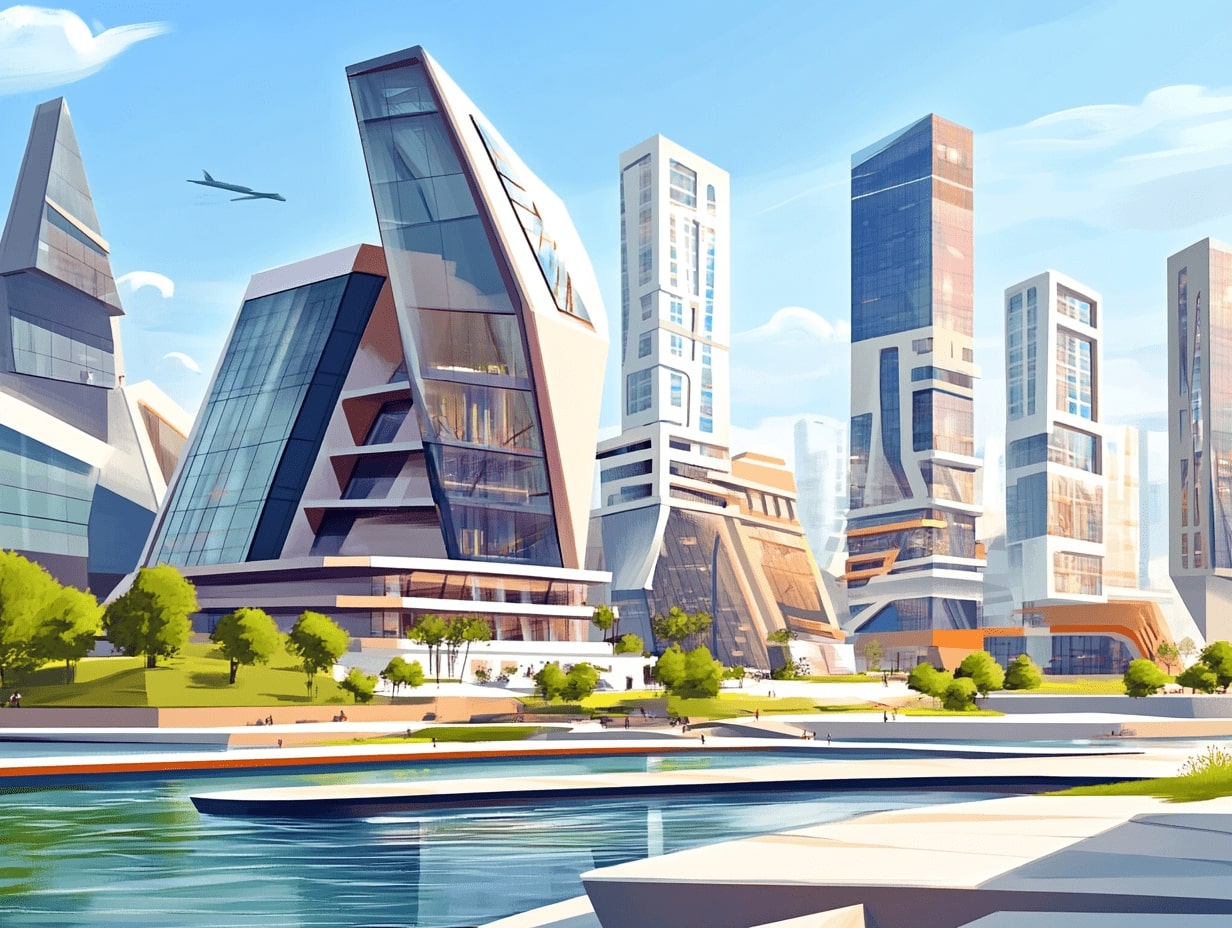- Home
- Articles
- Architectural Portfolio
- Architectral Presentation
- Inspirational Stories
- Architecture News
- Visualization
- BIM Industry
- Facade Design
- Parametric Design
- Career
- Landscape Architecture
- Construction
- Artificial Intelligence
- Sketching
- Design Softwares
- Diagrams
- Writing
- Architectural Tips
- Sustainability
- Courses
- Concept
- Technology
- History & Heritage
- Future of Architecture
- Guides & How-To
- Art & Culture
- Projects
- Interior Design
- Competitions
- Jobs
- Store
- Tools
- More
- Home
- Articles
- Architectural Portfolio
- Architectral Presentation
- Inspirational Stories
- Architecture News
- Visualization
- BIM Industry
- Facade Design
- Parametric Design
- Career
- Landscape Architecture
- Construction
- Artificial Intelligence
- Sketching
- Design Softwares
- Diagrams
- Writing
- Architectural Tips
- Sustainability
- Courses
- Concept
- Technology
- History & Heritage
- Future of Architecture
- Guides & How-To
- Art & Culture
- Projects
- Interior Design
- Competitions
- Jobs
- Store
- Tools
- More
Exploring Destinations That Combine Travel and Architecture: Top Cities & Hidden Gems
Discover how travel and architecture intersect to create unforgettable adventures. From iconic landmarks like the Eiffel Tower to hidden gems like Tbilisi's Bridge of Peace, explore destinations that celebrate design, culture, and history. Get tips for planning architecture-centric trips and immerse yourself in the stories behind extraordinary structures worldwide.

Traveling isn’t just about ticking places off a list; it’s about immersing ourselves in the stories and cultures woven into each destination. For those of us who love architecture, every trip becomes an opportunity to marvel at the artistry and innovation that shape the world’s skylines and streetscapes. From ancient wonders to modern masterpieces, architecture gives us a deeper connection to the places we visit.
Some destinations seamlessly blend travel and architecture, offering experiences that leave us in awe. Whether it’s wandering through historic neighborhoods or standing beneath towering futuristic structures, these locations invite us to explore the intersection of creativity and culture. Let’s uncover the spots where our passion for travel meets our admiration for architecture.

Table of Contents
ToggleThe Intersection Of Travel And Architecture
Travel and architecture intersect by creating immersive experiences that celebrate history, culture, and design. As we explore cities and landmarks, their architectural details tell stories of innovation and heritage. Iconic structures like the Eiffel Tower in Paris or the Taj Mahal in Agra embody the spirit of their regions, drawing millions of visitors annually.
Architectural styles often mirror the cultural and historical contexts of their locations. For example, Gothic cathedrals in Europe showcase intricately carved facades, while Japanese pagodas reflect spiritual symbolism and craftsmanship. These diverse styles offer travelers a deeper understanding of the philosophical and historical roots of each destination.
Beyond individual buildings, urban layouts and design shape how we experience cities. Walkable neighborhoods, such as Florence’s historic center or New York City’s Greenwich Village, intertwine functionality and aesthetics with vibrant community life. These environments invite prolonged exploration, fostering a stronger connection to the space.
Modern architecture adds another dynamic to travel, with innovative structures transforming cityscapes. Destinations like Dubai feature contemporary marvels like the Burj Khalifa, while cities such as Bilbao have been revitalized by cultural institutions like the Guggenheim Museum. These designs combine artistic vision and engineering ingenuity, inspiring awe and curiosity.
Exploring the relationship between travel and architecture enriches our journeys, offering insights into human creativity and the evolution of societies.

Top Destinations For Architectural Enthusiasts
Architecture captivates us with its ability to mirror the culture, history, and creative spirit of a destination. From historic styles to cutting-edge designs, these cities offer remarkable experiences for architecture lovers.
Paris, France: A Blend Of Gothic And Modern Marvels
Paris offers a dynamic architectural landscape marked by Gothic and contemporary styles. The Notre-Dame Cathedral, with its intricate gargoyles and flying buttresses, stands as a masterpiece of Gothic design. The Eiffel Tower, a symbol of modernity when it was built in 1889, continues to dominate the Parisian skyline. The Louvre Pyramid blends classical architecture with sleek glass structures, embodying a seamless union of past and present.
Barcelona, Spain: Gaudí’s Architectural Wonderland
Barcelona showcases the unique work of Antoni Gaudí, whose influence defines the city. The Sagrada Família, still under construction since 1882, features an intricate blend of Gothic and Art Nouveau forms. Park Güell combines vibrant mosaics with organic shapes, reflecting Gaudí’s fascination with nature. Casa Batlló surprises visitors with its flowing shapes and colorful façade, epitomizing his imaginative approach.
Kyoto, Japan: Tradition Meets Simplicity
Kyoto combines traditional Japanese architecture with understated elegance. Kinkaku-ji, the Golden Pavilion, reflects Zen aesthetics with its gold-leaf-covered exterior mirrored in surrounding waters. Fushimi Inari Taisha presents thousands of vibrant red torii gates winding through forested trails. Traditional machiya townhouses in Gion highlight wooden craftsmanship and harmony with nature, offering a glimpse into Kyoto’s historic lifestyle.
Dubai, UAE: Futuristic Cityscapes
Dubai is synonymous with futuristic architecture that redefines urban landscapes. The Burj Khalifa, the world’s tallest building at 2,717 feet, exemplifies engineering innovation. The Palm Jumeirah, a man-made archipelago, adds another layer of architectural marvel to the city. The Museum of the Future, with its torus-shaped design, integrates avant-garde architecture and technology to create an immersive experience.

Hidden Gems For Architecture Lovers
Unearthing lesser-known destinations offers rewarding experiences for architecture enthusiasts. These gems seamlessly blend history, culture, and design.
Tbilisi, Georgia: A Fusion Of East And West
Tbilisi showcases a captivating mix of European and Asian architectural influences. Its Old Town features traditional wooden balconies, intricately carved facades, and narrow winding streets. Landmarks like the sulfur baths and Narikala Fortress highlight Persian and Byzantine design elements. Modern structures like the Bridge of Peace add contemporary flair, reflecting the city’s dynamic evolution.
Porto, Portugal: Colorful Facades And Historic Charm
Porto enchants with its vibrant streetscapes and rich architectural legacy. Ribeira District exhibits colorful tiled facades and medieval alleys along the Douro River. The Church of São Francisco and the Clerigos Tower showcase Gothic and baroque styles. Contemporary landmarks like Casa da Música juxtapose historic charm with modern innovation, making Porto a diverse architectural experience.

Tips For Planning Your Architecture-Centric Travel
An architecture-focused trip requires thoughtful planning to maximize both the design and cultural elements of each destination. By combining research and balance, we can create a rewarding travel experience.
Researching Architectural Highlights
Identifying key architectural landmarks ensures efficient trip planning. We start by creating a list of iconic buildings, historical sites, and modern designs specific to the destination. For example, researching Antoni Gaudí’s works in Barcelona can help us plan visits to the Sagrada Família and Park Güell. It’s also helpful to explore local architectural styles, such as Romanesque or Bauhaus, depending on the region.
Including periods and styles relevant to the locale adds depth to our itinerary. Resources like UNESCO’s World Heritage Sites and official tourism websites offer verified details on key structures and their significance. Virtual tours, documentaries, and architectural journals can provide valuable insights before arrival.
Balancing Architecture With Cultural Exploration
Appreciating architecture becomes more meaningful when paired with immersive cultural experiences. While visiting iconic landmarks, we allocate time for exploring nearby neighborhoods, local markets, and authentic cuisine. For instance, pairing Paris’s Gothic Notre-Dame Cathedral with a stroll through the Latin Quarter deepens our understanding of the city’s heritage.
Maintaining variety helps sustain interest throughout the trip. Combining visits to historic sites like Kyoto’s Kinkaku-ji with hands-on workshops in traditional crafting or tea ceremonies builds a richer cultural connection. We also make room for downtime to interact with locals, fostering encounters that augment our appreciation of both design and culture.
Conclusion
Exploring destinations that combine travel and architecture offers unparalleled opportunities to connect with history, culture, and innovation. From iconic landmarks like the Eiffel Tower to hidden gems like the Bridge of Peace, architectural travel enriches our understanding of human creativity and cultural narratives. By appreciating diverse design styles and integrating immersive local experiences, we deepen our appreciation of the world’s architectural treasures.
- architecture lovers travel
- architecture vacation packages
- architecture-focused travel
- best cities for architecture lovers
- cultural architecture travel
- exploring architecture around the world
- famous architectural landmarks
- historic architectural tours
- inspiring architectural travel
- modern architecture travel
- must-see architectural sites
- top architectural destinations
- unique architectural destinations
- wanderlust architecture tours
- world's architectural marvels
- world's best architectural cities
Submit your architectural projects
Follow these steps for submission your project. Submission FormLatest Posts
Istanbul: A Living Museum of Architecture
Istanbul is a city where East meets West, offering a rich architectural...
Top Architectural Wonders You Must See on Your Next Vacation for an Unforgettable Journey
Discover breathtaking architectural wonders across history and innovation on your next vacation....
Discover 10 Mosques in the Arabian Peninsula: Architectural Wonders and Spiritual Heritage
Discover the allure of the Arabian Peninsula through ten remarkable mosques that...
The Best Places to Travel in 2025: Top Destinations for Unforgettable Adventures
Discover the top travel destinations for 2025, from iconic hotspots like Kyoto...












Leave a comment